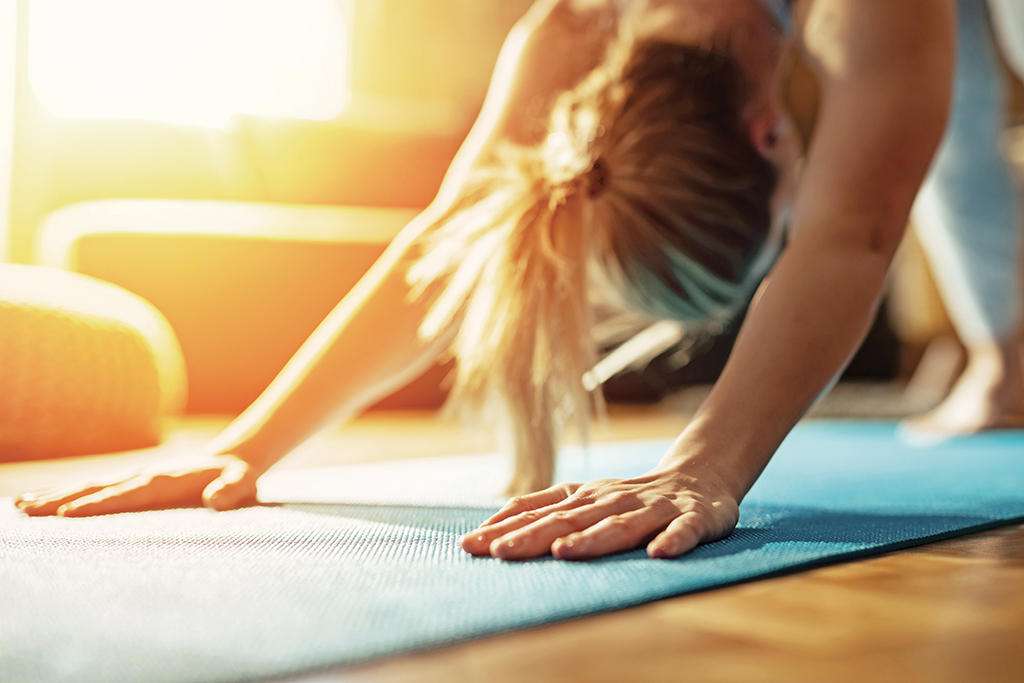For many of us in the Wood River Valley, Winter is the most treasured time of year. Powder days, hockey tournaments, feeling the chill on our cheeks and the burn in our legs as we stride, slide and carve on the ice and snow. Our beloved cold weather sports allow us to be simultaneously present and exhilarated, and perhaps, they create a space free from other worries and fears, demanding unaltered focus. But activities like downhill skiing, snowboarding, Nordic skiing, hockey and ice-skating also demand skill, strong legs, solid core, confidence and steady balance. One of the many ways the COVID-19 outbreak has affected people here and everywhere, is their strength conditioning.
“Generally, people have struggled,” said Kjersten Grinde Timoney, Doctor of Physical Therapy for St. Luke’s Outpatient Clinic in Ketchum, “Social, emotional, cognitive and physical health have all taken a really big hit since the pandemic.”
Jumping into a multifaceted sport like downhill skiing after a long period of limited or no pre-conditioning, could make people more susceptible to injury and that worries Kjersten. “I am a little fearful moving into the season with people going on to the mountain or trail in a set-back or even bad pre-conditioned shape” she expressed.
Primarily the injuries accrued from winter sports are aches, sprains and strains in the knees, ankles and lower back. Not as common but still prevalent injuries include ligament tears in the knees, tibial plateau fractures and ankle breaks.
When asked how people hurt themselves, Kjersten said that many patients tell her that their balance isn’t what it used to be. “Balance is like strength,” Kjersten said, “if you don’t use it you lose it, especially if you’re over the age of forty.”
Balance is key
Incorporating balance exercises into a fitness regimen does several things; it challenges stabilizing muscle groups, it works the core muscles and makes people more confident in where their body is in space. All of which are important in high impact or fast-moving winter sports. Reaping the benefits of core strength and improved balance can be achieved by regularly including exercises found in the disciplines of both yoga and Pilates.
Pilates focuses on large core muscle (or the body’s “powerhouse”) strengthening and lengthening at the same time. Two things that seemingly everybody needs to work on, according to Emily Knowles, a group fitness instructor, personal trainer and Pilates instructor at Zenergy.
“If you’re not strengthening and stabilizing your core [the muscles closest to the center of the body, not just abs],” explained Emily, “you are more susceptible to injury in your extremities.”
Holding good form in repetitive motion sports, like downhill and Nordic skiing, depends on a strong connected system in the body where the core protects the back and the hips, and the gluteal muscles and quadriceps protect the knees and ankles. However, the body can only take so much repetitive motion until fatigue causes undue strain in the over-used muscles. Strengthening the body’s large muscles to protect the smaller, more vulnerable areas is key to a healthy, active winter, but learning to listen to the body’s cues is perhaps just as important.
Along with teaching counter balancing poses that can improve stamina and strength and provide relief to muscles that regularly engage in a repetitive motion sport, yoga goes beyond the physical aspect, says Beth Stuart, yoga instructor and owner of idaYOGA studio in Hailey. Yoga practices force a connection to “the breath” and allow people to be fully present, “listening” to their body. What feels good? What doesn’t feel good?
“Yoga is good for everything,” said Stuart, “Physically. Mentally. It can teach us to drown out the noise and be present in the moment.” This is especially important when training for fast-paced sports such as skiing.
The National Ski Area Association says people should do their best to get outside this winter. Outdoor recreation is proven to improve mental and physical health, they insist. But nothing is worse for a long winter then a sidelining injury, and a great way to prevent injury is to pre-condition either at home or at the gym. To reduce the risk of exposure, many people have chosen not to return to their exercise facilities since reopening. Before writing the gym off altogether as too risky, go check it out, advised Kjersten, “Put on your mask and scope out your facility’s policies and rules regarding COVID-19, and then make your decision.”
Emily related that some Zenergy members have expressed a great appreciation for their gym, calling it their lifeline, while others set up a home gym that they are very happy and more comfortable with.
So, whether the decision is to stay home, or venture out, what really matters is taking the steps to remain injury free this winter. No matter what stage you find yourself physically, the best advice this season is to never try to perform outside your ability level—don’t get overly excited on a powder day, be aware of limits, and always start the season out slow to hone skills and build strength. Think of the winter as a marathon, going strong and steady to the end.
At Home Core and Glute Exercises with Limited Equipment
(These exercises are generously provided by Kjersten Grinde Timoney, D.P.T)
What you’ll need: Resistance band and a chair.
- Supine Bridge (2 to 3 sets of 10 repetitions, one to two times a day)
Setup: Begin lying on your back with your arms resting at your sides, your legs bent at the knees and your feet flat on the ground.
Movement: Tighten your abdominals and slowly lift your hips off the floor into a bridge position, keeping your back straight.
Tip: Make sure to keep your trunk stiff throughout the exercise and your arms flat on the floor.
- Clamshell with Resistance (3 sets of 10 reps once a day)
Setup: Begin by lying on your side with your knees bent 90 degrees, hips and shoulders stacked, and a resistance loop secured around your legs.
Movement: Raise your top knee away from the bottom one, then slowly return to the starting position.
Tip: Make sure not to roll your hips forward or backward during the exercise.
- Sit to Stand without Arm Assistance (3 sets of 10 reps once a day)
Setup: Begin by sitting upright on a chair with your feet slightly wider than shoulder width apart.
Movement: Reach out with your arms and lean forward at your hips until your bottom starts to lift off the chair. Move your body into a standing upright position, then reverse the order of your movements to return to the starting position.
Tip: Make sure not to let your knees collapse inward during the exercise.
- Tandem Stance with Support (3 sets of 10 reps once a day)
Setup: Begin in a standing upright position holding on to a stable object for support.
Movement: Place one foot directly in front of the other so you are standing heel-to-toe. Hold this position. For increased challenge, close your eyes. Goal is 1 minute with each foot leading.
Tip: Make sure to maintain your balance during the exercise


